AMD Radeon HD 7870 GHz Edition & Radeon HD 7850 Review: Rounding Out Southern Islands
by Ryan Smith on March 5, 2012 12:01 AM ESTMeet The Radeon HD 7870 & Radeon HD 7850
For today’s review AMD sent over a 7870 and a 7850. Both are built on the 7870 reference design, so the cards are functionally identical except for the configuration of their respective GPU and the number of PCIe power sockets present.
For retail cards this will be very similar to the 7700 series launch, with partners doing semi-custom cards right away. In fact among the list of cards AMD sent us only Club3D will be using the complete 7870 reference design, while everyone else will be using the reference PCB along with their customary open air coolers. The 7850 will be even more divergent since AMD actually has a different, shorter reference PCB for these cards. Consequently our 7850 has very little in common with retail 7850s when it comes to their construction.
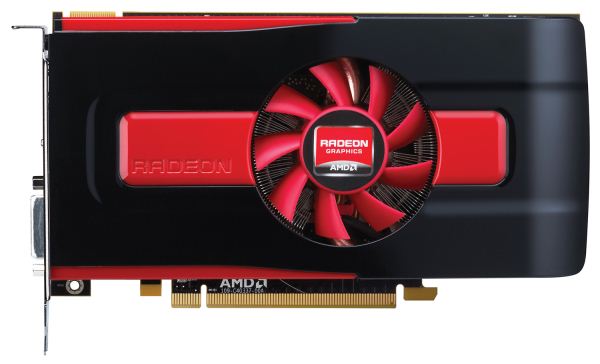
The Radeon HD 7850 Reference Design - Only Sampled To Partners
Starting as always with the cooler, the 7870 reference design is effectively a smaller version of the 7970 reference design. Here AMD is once again using a blower design with a slightly smaller blower, shrouded in the same hard red & black plastic as with the 7900. Underneath the shroud we find AMD’s heatsink, which utilizes a copper baseplate attached to 3 copper heatpipes, which in turn run into an aluminum heatsink that runs roughly half the length of the card. This is fairly typical for a blower design for a sub-200W card, but again almost all of the retail cards will be using a completely different open air design.
The 7870 PCB itself runs 9.5” long, with an additional .25” of shroud overhang bringing the total to 9.75”. Our card is equipped with 8 5GHz 256MB Hynix GDDR5 memory chips, the same 5GHz chips that we saw on the 7700 series. For the 7870 power is provided by a pair of 6pin PCIe power socket, while the sub-150W 7850 uses a single socket. Both cards feature a single CrossFire connector, allowing them to be paired up in a 2-way CrossFire configuration.
Meanwhile for display connectivity AMD is using the same configuration as we’ve seen on the 7900 series: 1 DL-DVI port, 1 HDMI port, and 2 miniDP ports. Interestingly, unlike the 7900 series and 7700 series there is a set of pads for a second DVI port on the card, and while AMD doesn’t make use of them at least one XFX card will. The 7800 series as the same display configuration options as the 7900 series though, so while it can drive up to 6 monitors it can only drive 2 TMDS type displays at once, and if you want to drive a full 6 monitors you’ll need a MST hub.
Finally, I wanted to touch on marketing for a bit. We typically don’t go into any detail on marketing, but with the 7800 something AMD did caught my eye. One of AMD’s marketing angles will be to pitch the 7800 series as an upgrade for the 5800 series; AMD doesn’t typically pitch cards as upgrades in this manner, and the 5800 comparison is especially odd.
At 2.5 years old the 5800 series is no longer the video card king but it’s also not particularly outdated; other than tessellation performance it has held up well relative to newer cards. More specifically, the 7800 series performance is roughly equal to the 6900 series, and while the 6900 series as a step up from the 5800 series it was not a massive leap. With its $350/$250 MSRP the 7800 series has common pricing with the 5800 series, but at only 20-40% faster than the 5800 it’s not the kind of step up in performance that typically justifies such a large purchase. Of course AMD’s conservative pricing has a lot to do with this, but at the end of the day it’s odd to call the 7800 series the upgrade for the 5800 series when the 7950 is the more natural upgrade from a performance perspective.


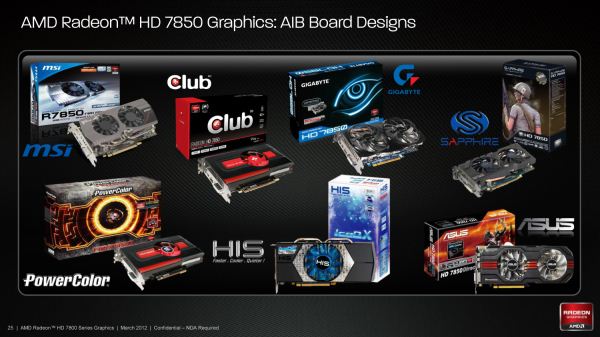
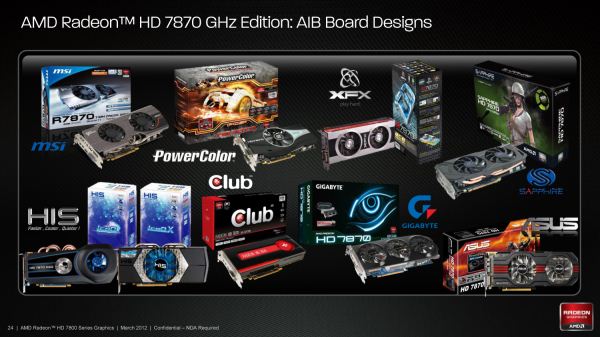

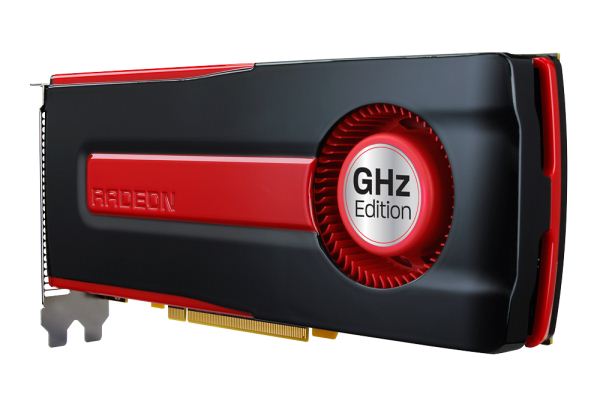












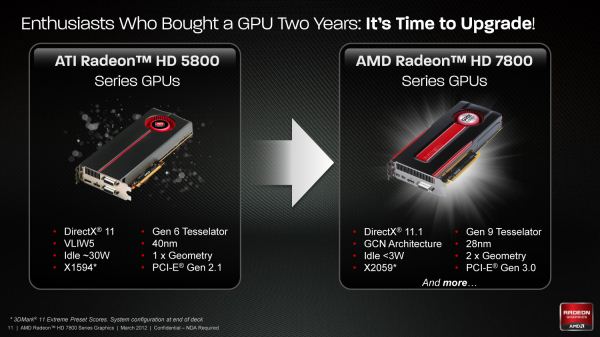








173 Comments
View All Comments
fingerbob69 - Tuesday, March 6, 2012 - link
It ain't, the 7870 is faster by 25-33% depending on the res. Price wise it's about 30% more (UK) but that fits with the bump in performance. So, you're wrong.Houdani - Monday, March 5, 2012 - link
Hey! My mom was born on Pitcairn. It's the top of a blown off volcano, only 1x2 miles large. No correlation, I'm sure. Interesting.AlB80 - Monday, March 5, 2012 - link
It beats 6950. 6970 and 7850. Is it correct?haukionkannel - Monday, March 5, 2012 - link
Well these are good card even at this moment! Ofcource we can hope cheaper prizes, but that need at least two competitors and at this moment there is none...And I would not wonder if Kepler will be prices accordingly. Those kepler chip are bigger, if leak are true, so they should be faster and they definitely will be more expensive (if not counting those renamed low end cards tha allso AMD is releasing this time)
AMD is not getting profit (in total) and Nvidia has a lot of new staff going on that need a lot of money to develop, so there seems to be zero reason to both company to reduce the prices... pity but true.
If you have good 5000 or 6000 series card you don't need these (same as if you have good 6600 serieas cpu you don't need ivy...) at this moment. But if you need a lot of power for little power usage these are extremely good and allso as someone said, these are very small chips! So there is a lot of room for a little bit bigger for 8000 series. Tick tock... Seems to be a lot like Intel Ivy vs Hasvell. Ivy does not offer a much compared to sandy, only smaller power usage and a little bit better speed. Like someone else said, very similar situation.
Hubb1e - Monday, March 5, 2012 - link
The upgrade from a 5800 to a 7800 may be only 20-40% on stock clocks, but add in the extra headroom the 7800 has when overclocking and you're looking at a decent upgrade. Once the prices come down on these I'm sure you'll see quite a few folks dropping their 5800 for a 7800.PurpleMoose - Monday, March 5, 2012 - link
The 7850 (usually) slightly outperforms the 6950 despite having only 1024 shaders compared to 1408, with a ~7% core overclock (and a slight memory underclock). Even being conservative, that would make the GCN shaders about a third more efficient than the VLIW4 ones. But if we assume that a VLIW4 cluster performs more or less the same as a VLIW5 cluster, as does seem to be the case, then we can compare a hypothetical VLIW4-based 5770 with 640 shaders to the 7770. In this case the 7770 outperforms the 5770 basically by its clock speed difference, in other words clock for clock, shader for shader, VLIW4/5 vs GCN seems to be a wash.So why doesn't the 7700 series show as much (ie any) improvement?
The most obvious deficiency is the memory bus and memory bandwidth, but if thats the case why not add more? Alternatively, if you're happy with the performance as is, why not cut away a few more shader groups as it seems the card really can't use them, and save even more space? I had a very brief look for overclocked results and couldn't really find any - what I'd find really interesting is if anyone has benched a stock 7770 against a 7750 running at 7770 frequencies. I wonder how much the loss of shaders would hurt.
jesh462 - Monday, March 5, 2012 - link
Whenever I read an article on the new 7xxx series, I can't help but wonder if people remember what they're looking at. AMD moved to 28nm with this series. They also introduced a completely new architecture. They did so with no complications and without going overtime on the release date.This hasn't been done before. Even Intel doesn't attempt to do this with their CPUs. Tick, then tock, right?
Not only did AMD manage to get their new line up out, but the new cards have performance that exceeds their Nvidia counterparts on both the gaming and compute levels, in most cases. People who buy actual retail samples of the 7xxx series are pleased with the great overclocking headroom. It's obvious that there is a lot of room, even in the 7xxx series current iteration, for growth.
Despite all this, I still see people talk about how a 7xxx card isn't worth it, and how AMD is a sh*t company. Really? Ok.
Disclaimer, I own an i7 laptop with a geforce 560 blah blah.. fanboy whatever. Just think about this before you post. Yeah the new cards could use a price drop. We all know they will, sooner or later. That's why it's called the waiting game.
arjuna1 - Monday, March 5, 2012 - link
a 7xxx card is not worth it and AMD is not a sh*t company.I tend to agree with you for the most part but, there are no NVIDIA's counterparts for the 7xxx series, yet, and when there is, the 7xxx will go down in prices and then their value will increase.
CeriseCogburn - Thursday, March 8, 2012 - link
I'm sorry, we were promised southern islands for the 6000 series, and then, all that changed...What we really have here is a release that is like 2 years late.
Apparently once AMD re-announces it's new release schedule after admitting it missed it's last release target... all you people suddenly get a gigantic case of perfect amnesia.
To put it simply this is AN ENTIRE GENERATION LATE ON THE PROMISED RELEASE.
mattgmann - Monday, March 5, 2012 - link
Where is this misconception that the pricing is anywhere near acceptable on these new parts coming from? So they fit right in with the current price/performance ration. So what? AMD has basically put out a new line of cards that match their competitors previous generation and cost SLIGHTLY less.Aren't technologies supposed to get better? What's the point in upgrading if you get basically the same amount of performance for your dollar today as when you bought you last part?
Intel's new top end processors cost the same as last generation's, and the generation before that. New products replace old ones in pricing structures. AMD is raking in cash on these cards. They're less expensive to produce than last generation and retail for MORE money.
AMD is taking full advantage of their current market position, and instead of passing on ANYTHING to the consumer, is milking every profitable drop.
These cards' performance is impressive when compared apples to apples against last generation's equivalents. But since they basically all occupy a price slot a full tier higher than their predecessors, the comparison is moot.
Too bad the only 2 companies in the graphics card race are so ill equipped to advance the industry. AMD, Nvidia, get a clue.